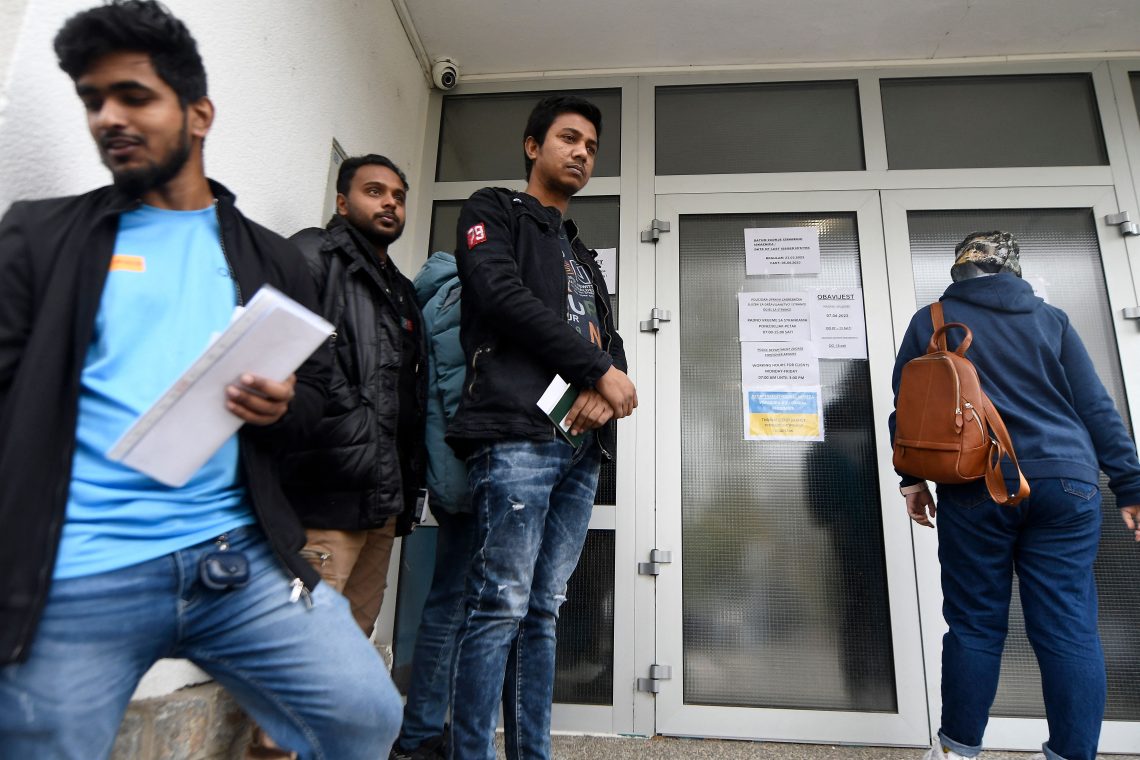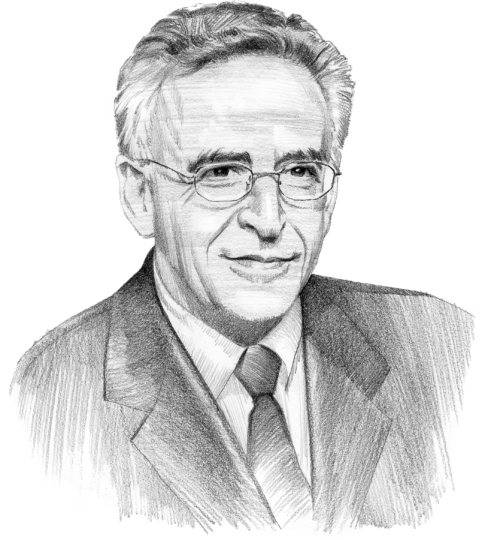Rejecting Fortress Europe
The European Union will not solve the problems of an aging and shrinking society by discouraging immigration. Creative legal migration policies are needed.

In a nutshell
- An aging EU, facing labor shortages, may have 30 million fewer people by 2100
- Anti-immigration sentiment is clashing with the need to attract more skilled workers
- The 27-nation bloc needs comprehensive policies on population and migration
European elections, and Ursula von der Leyen’s likely bid for a second term as European Commission president, are barely more than a year away. At the same time, Europe is facing a demographic crisis, with declining birthrates, an aging population and labor shortages. Mainstream politicians are flirting with anti-European Union, anti-immigrant populists who are hostile to foreign workers and refugees. There is pressure to use EU funds to build border walls and fences. Faced with these challenges, will the Commission reject a new Fortress Europe and instead announce a comprehensive population strategy that encompasses migration, jobs, skills shortages, pensions and training?
Europe’s demographic challenges
Europe is getting older. It has fewer births and people are living longer. The EU’s population will peak at 526 million, according to current projections by the 2040s, and then decline by nearly 30 million people by the end of the century.
A third of Europeans will be over 65 by the 2050s, up from 20 percent today. By the 2080s, there are likely to be only five people of working age for every four younger or older people dependent on them. This is liable to adversely affect economic growth, public finances, pensions, health and social cohesion.
Meanwhile, with rapidly growing populations in Africa and the Middle East, Europe will account for a declining share of the global population. Its share is falling from nearly 12 percent in 1960 to 6 percent today and, according to projections, it will dip below 4 percent by 2100, diminishing Europe’s political and economic influence.
More on demography
The implications of a shrinking Asia
The EU’s response
Considering these disquieting trends, President von der Leyen created the post of vice president for democracy and demography in 2019, assigning it to Dubravka Suica from Croatia. Commissioner Suica received a mandate to assess the impact of demographic change in the EU and make proposals for addressing it. The commissioner published a green paper on aging and a report on the impact of demographic change. These set out the increasing demand for elderly care and the changing gender balance, as women live longer than men, as well as the growth of single-member households, the desertion of rural areas and the increasing vulnerability of children. She put forward recommendations for meeting these social and economic challenges.
Migration, an important factor in population change, is not part of Ms. Suica’s mandate and barely figures in these reports. Commissioner Nicolas Schmit from Luxembourg is responsible for the “free movement of labor,” one of the EU’s fundamental freedoms. But his mission statement also lacks any mention of migration. This is the responsibility of another department, Migration and Home Affairs (DG HOME), overseen by Commissioner Ylva Johansson of Sweden. This department, a counterpart to national interior ministries, views migration largely through the lens of security. This indicates how contentious a topic it is among EU leaders, given domestic politics.
The EU has legitimate security concerns, especially in preventing human traffickers from exploiting would-be migrants and asylum seekers (with tragic consequences), and stopping neighboring countries, such as Belarus, from weaponizing migration. But there have been numerous reports of border patrols pushing back migrants in violation of international law. The European Parliament and other EU bodies have demanded explanations of such alleged cases.
Facts & figures
Migration and populism
Concerns about migration have fueled populist movements across Europe and were a catalyst for Brexit. Migration, following the 2015 crisis, and demographic change have upended Europe’s previous liberal consensus, according to some observers. But the EU, faced with deep divisions, has not managed to reform its creaking migration and asylum policy. Meanwhile, European leaders have unwittingly given a boost to anti-immigrant, anti-EU populists by allowing security to dominate their discourse on migration. Populist arguments have been taken up by parties hitherto considered moderate not only in Eastern Europe but also in the EU’s founding countries. Political leaders have done little to educate the public about Europe’s declining demography and their efforts to attract workers from outside the EU.
Labor shortages
Yet, with overall unemployment falling and labor markets tight, Europe is facing an unprecedented skills shortage and high levels of unfilled vacancies. Over 3 percent of jobs in the euro area were unfilled in the fourth quarter of 2022, with vacancies rising to 4.6 percent of jobs in Austria, 4.5 percent in Belgium and the Netherlands, and 4.4 percent in Germany, which lacks 400,000 qualified and unqualified workers. Covid-19 disrupted European labor markets and temporarily interrupted the flow of migrants, internal and external, to countries that are now experiencing high job vacancy rates.
Despite its lack of a cohesive strategy on demography and migration, the Commission recognizes that “removing obstacles to labor mobility across Europe” and “managing economic migration” can help match supply and demand for workers.
At the beginning of 2023, the Commission observed that many companies in the EU are struggling to find qualified workers in key sectors, particularly healthcare and information technology. The shortages, moreover, will intensify in the future. One way to fill the gap is through well-managed labor migration.
Commissioner Johansson acknowledges that attracting skilled and talented people from non-EU countries is high on the agenda and that, in the global race for talent, the EU will need to strengthen its legal migration policy.
The EU’s immediate priority is to overcome its own critical labor shortages. But this approach, if successful, would accelerate the brain drain from poorer countries, offsetting the benefits of much EU development assistance. Labor shortages in Europe are not only for well-qualified workers but also in low-skilled areas such as catering, caring, health services and agriculture, particularly during the fruit picking season.

Attracting qualified migrants
To attract qualified migrant workers the EU needs to improve training opportunities, foster the recognition of professional qualifications and encourage mobility across Europe. In principle, such initiatives are already part of EU legislation and the main challenge is implementing them for migrants from non-EU countries.
Business representatives want to encourage qualified migrant workers from third countries to come to Europe to help revive economic growth after the pandemic and improve Europe’s international competitiveness. But an earlier “blue card” scheme failed to entice many foreign workers. Today EU countries, like Germany, Italy and Spain, compete to attract skilled workers by offering incentives such as easier access to residence rights and simpler procedures. But negative political signaling about immigration discourages the qualified workers that the EU is seeking to attract. A proposed pact on migration and asylum, which the EU is struggling to approve before next year’s elections, would address some of these issues.
Walls and fences
The tearing down of walls has been an identity issue for the EU, especially since the demolition of the Berlin Wall and the Iron Curtain. European representatives have been critical of Israel and the United States for building separation barriers. “Europe Without Frontiers” was the headline goal of the campaign to create a single market, providing for the free movement of workers across internal borders. The Schengen system, covering 22 EU states as well as Iceland, Liechtenstein, Norway and Switzerland, extends this to the free movement of people in general.
But globalization, mass migration, terrorist threats, drug trafficking and conflict have led to a proliferation of border walls and fences across the world. By one count they increased from seven in 1989 to 74 in 2022. In the last eight years, walls and fences at external and internal EU borders grew from 315 km to 2,048 km. Bulgaria, Estonia, Finland, France, Greece, Hungary, Latvia, Lithuania and Spain (in Ceuta and Melilla) have built barriers with different materials and lengths. Other EU countries plan to build or extend frontier barriers.
Twelve European governments wrote to the Commission in October 2021 drawing attention to the “instrumentalization of illegal migration and other hybrid threats” by neighboring states, claiming that physical barriers are the most effective means of protection against these threats, and asking that the EU budget be used to finance such barriers.
The Commission has resisted this request until now, arguing that there are more effective means to prevent illegal border crossings, such as enhanced surveillance and integrated border management, and pointing out that EU funds are not intended for this purpose.
But the EU’s top leaders meeting in a special session in February, a year after Russia’s invasion of Ukraine, called on the Commission “to immediately mobilize substantial EU funds and means to support Member States in reinforcing border protection capabilities and infrastructure.” This formula brings the EU a step closer to funding walls and fences to keep would-be immigrants out.
Scenarios
In the run-up to next year’s elections, the EU aims to make progress on the control of external borders, burden-sharing among member states in processing migrants and asylum seekers and preventing human trafficking. But these are intractable problems with entrenched positions that will not be easily overcome.
A bold move for the Commission president would be to highlight the EU’s manpower needs, to propose that the EU should take the initiative to narrow the skills gap, instead of national governments trying to outbid each other, and to promise to bring together responsibilities for migration, demography, jobs, pensions and training in the next EU executive.
She should push for the establishment of a new EU agency to handle demography and migration. A vice president could be designated to implement these initiatives, covering both economic and security priorities as well as population pressures in neighboring regions of Africa and the Middle East.
There are no quick fixes, but a deft and courageous drive could break the deadlock and avoid creating a new Fortress Europe with its somber and unappealing implications.










